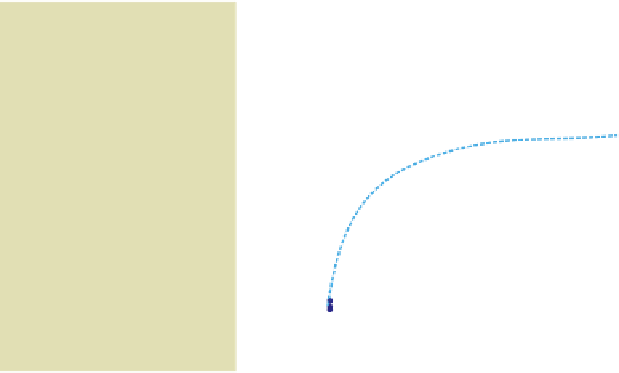Biology Reference
In-Depth Information
0.75
Fig. 10.4
Sex
ratio adjustment
in the parasitoid
wasp
Nasonia
vitripennis
. A less
female-biased sex
ratio is produced
when larger
numbers of
females lay eggs
in a patch. From
Werren (1983).
Photo by Michael
Clark.
0.50
0.25
0
2
4
6
8
10
12
14
16
Number of foundresses
males will be wasted. The crucial difference between this and the earlier argument for a
1:1 sex ratio is that here the ratio of males to females in the rest of the population does
not matter. A female-biased ratio within a brood will not give other parents a chance to
benefit by concentrating on sons. Hamilton noticed that in many species where there
was a high likelihood of inbreeding there was a tendency to produce just one or a small
number of males in each brood. An example which supports this prediction is the
viviparous mite,
Acarophenox
, which has a brood of one son and up to 20 daughters.
The male mates with his sisters inside the mother and dies before he is born.
Hamilton also suggested that if individuals could assess the likely degree of LMC that
their offspring would experience, then they should adjust their offspring sex ratio
accordingly. Specifically, if N mothers lay eggs on a patch, and mating then occurs
between these offspring, before only the females disperse, then the evolutionarily stable
(ES) sex ratio (proportion sons) is (
N
− 1)/2
N
. This predicts that the sex ratio should
vary from 0.5 for large
N
(Fisher's case) to increasingly female biased as
N
is reduced.
In the extreme, if
N
= 1, then a sex ratio of zero is predicted, which is interpreted to
mean that the mother should produce just enough sons to fertilize her daughters.
Jack Werren (1983) tested this prediction with the parasitoid wasp,
Nasonia vitripennis
,
which lays its eggs inside the pupae of flies such as
Sarcophaga bullata
. In this species, the
winged females mate with the wingless males, either in, on or near the host pupae in
which they developed, before only the females disperse. Consequently, if only one female
parasitizes the pupa or pupae in a patch, her daughters are all fertilized by her sons and
as predicted the sex ratio of her clutch of eggs is highly biased towards females. Only
8.7% of the brood is male. If more females lay eggs on the patch, then the extent of LMC
is reduced and they should lay a less female-biased sex ratio. Werren found this pattern
in laboratory experiments, with individuals producing a less female-biased sex ratio
when more mothers laid eggs on a patch (Fig. 10.4).
Since then, recent advances in molecular methods (microsatellite markers) have been
exploited to examine whether the same pattern also occurs in natural field populations,
examining wasps that emerge from fly pupae found in birds nests. Max Burton-Chellew and
colleagues (2008) genotyped all the wasps emerging from a number of nests (the offspring),
reconstructed the genotypes of their mothers and hence determined how many mothers
As more females
lay eggs on a
patch, a less
female-biased sex
ratio is favoured.
Parsitoid wasps
adjust the sex of
their offspring,
depending upon
how many
females are laying
eggs in that patch


















































































